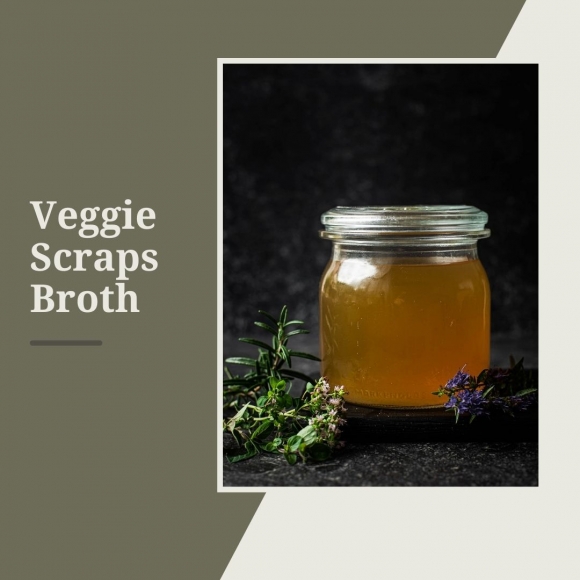Veggie Scraps Broth

When we are taking care of ourselves and the people we live with, eating a diet rich in fruits and vegetables, we can end up with a lot of scraps. Two ends, plus the skins, of every onion you eat, garlic peels, mushroom stems, carrot ends, cauliflower leaves, celery bottoms, parsley and cilantro stems, lemon and lime rinds, pumpkin and winter squash skin… the list goes on.
Last week we heard from Laura Armour about composting - a great way to keep unnecessary items out of the landfill and instead create food for your (or someone else’s) garden. Food for the earth! But some food scraps can also be repurposed into more food for us humans.
Using vegetable (or meat, if that’s what you’re into) scraps to make broth is an easy way to get use out of the parts of our food that we would normally toss into the compost. With all the food waste that goes on in our country (the EPA estimated that in 2018, 42.8 million tons of food waste ended up in landfills or combustion facilities) it feels good to get the most use possible out of the food we buy.
Keep an old grocery bag, ziplock bag or tupperware in the freezer for storing scraps as they accumulate while cooking, this way you can freeze the scraps until you have enough and are ready to make a broth.
Once it’s time, pile the frozen scraps into a large pot and cover them with water. Here, it’s a good idea to add any spices you like to the mixture - thyme, rosemary, garlic, bay leaves, peppercorns. Bring the pot to a boil, then reduce heat and let simmer for at least one hour. I usually let mine simmer for two or three hours. To a certain extent, the longer the broth simmers, the more flavor you’ll get. Don’t forget to add some apple cider vinegar when you turn off the heat. Allow the broth to cool a bit before straining it through a fine mesh sieve.
After straining, it’s finally time to toss your scraps into the compost.
With spring in full swing, and summer on the way broth may seem obsolete. Who wants hot soup on a warm day? But a good vegetable broth can be used in so many ways. Here’s a short list of ideas:
- Risotto
- Beans
- Rice, couscous, quinoa (water replacement)
- Casseroles
- Stir frys
- Curry - to use all those farmers market veggies
- Chicken, or veggie, pot pie
- Savory grits (water replacement)
- Braising meat or veggies
- Pasta sauces
- Or, store it in the freezer for use at a later date.





